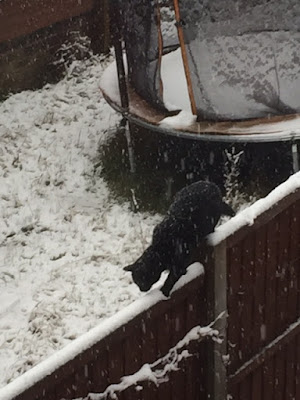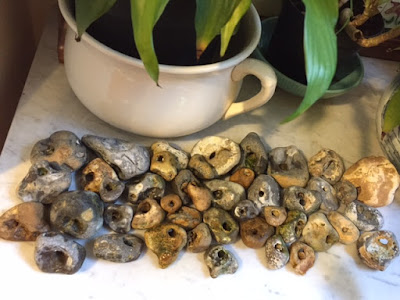On January 21st, I posted a jokey piece about the pressure of getting to the top of the UK Waterways Ranking Site's blog rankings. Paul - who owns the site, and persuaded me to sign up again a couple of years ago after quite a long hiatus - left a comment saying that I should post about waterways more often, seeing as it was the Waterways ranking site. Despite a lot of kind people saying they didn't mind what subjects I posted nonsense about, I thought this was quite an important point. I dislike an incorrect categorisation as much as the next person (probably a lot more, to be honest) and I had kind of overlooked the fact that I wasn't posting about boats and boating, because I am still thinking of it so much of the time.
This may, temporarily, not be a boating blog, but it will always be a boater's blog.
So I set myself the challenge of seeing whether I could crowbar in some kind of reference to boating or waterways into every post - and I wasn't going to cheat by having negative ones - e.g. 'Today I did not go for a walk along the Sheffield Canal.' So far, so much fun.
Then a couple of days later, Halfie made a little joke about including a waterways reference in his post. And Paul replied in the comments:
That's fine - but you're not claiming to be top of the "Waterways" ranking table with no posts about waterways. That generates complaints from those further down the table who are posting about waterways and don't think it's fair.
I must admit I was a little taken aback to hear that there had been complaints. And that these had been, not on the understandable grounds of the incorrect categorisation, but on the grounds that it was somehow unfair. So I'd like to explore that a little further.
The basis of the claim of unfairness must be that blogging about non-boating subjects gives me an advantage in the rankings over those virtuous souls who confine themselves to boating-related topics. This might be because non-boating subjects are more popular than boating subjects. Or it might be because having a wider variety of subjects to post about enables me to post more often - because as I noted, the way the UKWRS works means that frequency of posting within any given rolling week is a big factor in rising up the rankings.
However, I don't think either of these holds water (ha ha). There is no evidence that boating topics are less popular than pottery vegetables, holey stones, beer festival glasses or whether I have or have not been to Bristol. I have posted some frankly very dull stuff over the past month, and I am sure that my posts would be far more interesting and exciting if I were actually out boating.
The reason I crept up the rankings when I did was not because I had something great to post about every day; it was because I was making the effort to post every day. But I don't think that my ability to post more often was down to having a wider range of available topics. After all, for those who live aboard, every day's post is a boating post - and for those who don't, well, Paul was very clear in his response to Halfie that non-boating posts are not verboten per se; only in excess (however that is judged).
So whoever it was who complained that it was unfair, I contend that they were mistaken. If there is no advantage from non-boating posts, then there can be no unfair advantage. I have to say that I was surprised and a little saddened that someone had actually taken the whole thing seriously enough to complain. I am sure that it was no one I have met; beyond that I shall forbear to speculate.
Whoever it was, they will no doubt be delighted to hear that I have decided to withdraw from the UKWRS once again - for the same reason I did last time: because this has never been nor wanted to be solely a waterways blog, even if that's how it all started. And because I think the Waterways Ranking Site should be a niche waterways site, or what's the point. And this isn't a niche waterways blog. Oh no. It's much duller than that.






































